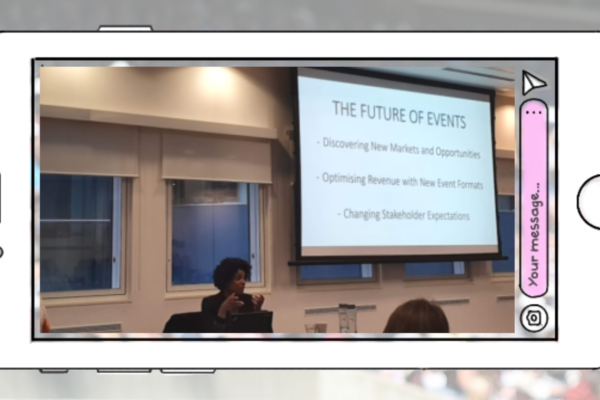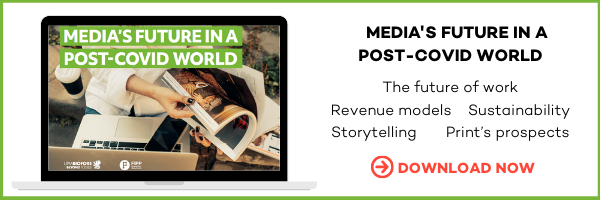Post-Omicron – what’s the future for events and conferences?
How quickly the world changes. A couple of weeks ago publishers appeared confident that 2022 would be the year they returned to major on live events and conferences. And then scientists in South Africa spotted a new variant of Covid-19 and once again media companies are nervously looking at their events’ refund options.
If the world has learned anything in the last week it has been that the path out of the pandemic will be a bumpy one. So where does this leave the media’s live events strategies? The short answer is that at this juncture no one really knows.
The most nuanced response though is arguably business as usual in that publishers need to develop imaginative solutions to cope with whatever the pandemic throws at them. This was a theme that dominated the recent PPA conference in London on 26 November, where smaller publishers from across the UK came to listen to speakers, take part in seminars and network with each other.
One of the most attended seminars, which was hosted by Donna Dia, Director of Events at Condé Naste, looked at the future of events. The discussions were of an optimistic nature, which might be due the fact that the conference was held hours before the Omicron variant came to dominate the day’s news.
Yet one message that seems to come through loud and clear from the discussion was that virtual events are here to stay.
Concepts that were cooked up at speed due to the pandemic are now becoming an essential plank of ongoing publisher strategy. Online events have reached the point when they need to be seen not just as a pandemic-induced bolt-on, but as a core revenue generator for publishers long term.
So what did the speakers and the delegates have to say? Here are some of their opinions.
Publishers need to accept that there are different types of events now – and optimise their strategy for each type
Many media companies remain optimistic that 2022 will see the return to real world events. Yet at the same time events are no longer limited to those who attend in person. Hybrid events, where part or indeed all of the event is available online, significantly extend their reach. While at the same time virtual-only events, which became the norm for much of the last year and half, in the worst case scenario may dominate 2022 through necessity. At the same time virtual events present opportunities for publishers that they might not have considered previously.
There is evidence that suggests that more people join a virtual event after it has begun, sometimes attracted by the content that is being shared via social media.
There needs to be an understanding that different types of events have differing objectives and KPIs. For example, as many companies have discovered, virtual events have become an important way to harvest data and extend the reach of media brands. For in-person events, monetisation might be achieved more through ticket price and sponsorship. For hybrid events, there could be a potential plethora of routes to monetisation.
Online events are a very useful way of harvesting data
The impending end for third party cookies – 2023 according to the latest updates from Google (read our report here) – means that publisher-accrued data on customers is more crucial than ever. As data values continue to soar, so then do publishers need to find ways in which to harvest and monetise it.
Virtual events provide this opportunity in that content can be offered as an exchange for data which may be monetised in both the short and long term. Even a limited virtual experience bolted on to the in-person event can significantly extend the reach of the event while generating lots of sign ups and, ultimately, user data.
Publishers need to re-think the format of events
Prior to 2020, events were created and executed in a linear fashion focusing on individuals turning up at a venue. Some of the formats that have been developed over the years might not necessarily be that appropriate for the post-Covid era.
What publishers need to do is to look at their event portfolio from a ground zero perspective and ask: “what should we do to make our offerings both profitable and relevant in the future?”
Experiment with interactivity
One of the main weaknesses of virtual events is their lack of interactivity. Savvy publishers have, however, adopted platforms that include quizzes and polls as well as more standard features such as the ability to comment or message.
For consumer events, one idea might be to send the virtual attendees samples which provide focus for discussion and are likely to ignite debates.
Take online assets seriously
One key issue for the publishing industry in evolving from real world events to virtual/hybrid has been the creation of assets for the latter. Companies have become used to working on assets like stands and logos for events. Companies need to ask: what are the equivalents for online events? What types of content can be used to best effect?
There are no set rules for running online and hybrid events
There are many different ways companies can approach these events. For example at conferences are the discussions streamed online instantaneously? Or are they filmed and then offered to subscribers at a later date? How can companies offer different levels of access to events and indeed individuals virtually. There is the opportunity to offer differing levels of access for which the fee to participants varies. Maybe an event is driven by a freemium model, but with content-based add-ons that are paid for.
Online events have reached the point when they need to be seen not just as a pandemic-induced bolt-on, but as a core revenue generator for publishers long term.
Develop a strategy to ensure that as many participants actually go to your online or virtual event
It is something that all of us have done in the last year. Sign up for a free event and then either forgot to turn up or decided that we had more pressing matters to deal with. In the past publishers have sometimes made it too easy for participants in offering catch up coverage after an event. If publishers want people to be there at the allotted time, other strategies need to be looked at such as only making content available at that time, or for a very limited time afterwards.
Ensuring people go to events should be a key driver for social and advertising strategies too. There is nothing wrong with constantly pushing an event on social media, and indeed employing countdowns so that potential customers are reminded of when the event is being held. Don’t just think that when an event starts that no more people will join. There is evidence that suggests that more people join a virtual event after it has begun, sometimes attracted by the content that is being shared via social media.
Finally, for online conferences smart segmentation helps to increase participation. People might not have the time or the inclination to attend a whole event but may be especially interested in one or two elements of it. It should be easy for them to join and leave as they wish.
In conclusion, Donna Dia stressed the imperative of still incorporating digitalisation into event strategies. “We must commit to ‘hybrid’ models of engagement that will offer the exclusivity of physical events whilst maintaining the global reach that only digital events can sustain,” she argued.








